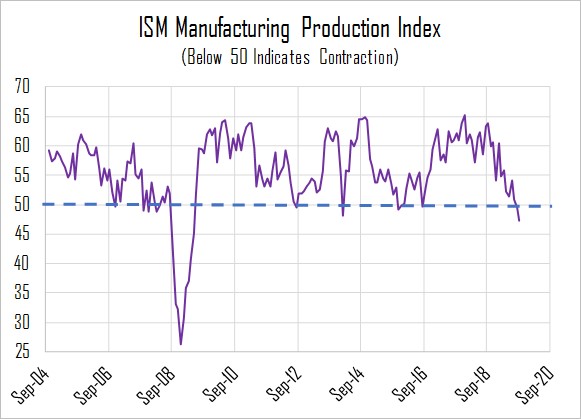When President Trump initiated the first round of tariffs against China in 2018, the ostensible purpose was to level the playing field in a way that would support the long-suffering American manufacturing sector, which had been a clear victim of decades of globalization and increased international trade. But as the back-and-forth tariffs have escalated into what appears to be a full-fledged trade war, manufacturing companies have ironically been among the hardest hit, indicating that the tariffs may be having the exact opposite of their intended effect.

In September, the Institute for Supply Management (ISM) reported that its manufacturing production index had dipped to 47.3, the lowest level for the index in over a decade (index numbers below 50 indicate contraction). The ISM index has now declined for three consecutive months, and it has plunged by nearly 20 points since early 2018, a few months before the first Chinese tariffs were announced. While it’s difficult to prove a direct causal link between the escalating tariffs and the manufacturing malaise, it’s clear that the tariffs are not helping matters, at least not so far. As we head into a Presidential election year, the erosion in the manufacturing sector could have a dramatic impact on the campaign, since the states that depend the most heavily on manufacturing production and employment were pivotal in delivering the 2016 election to President Trump.
